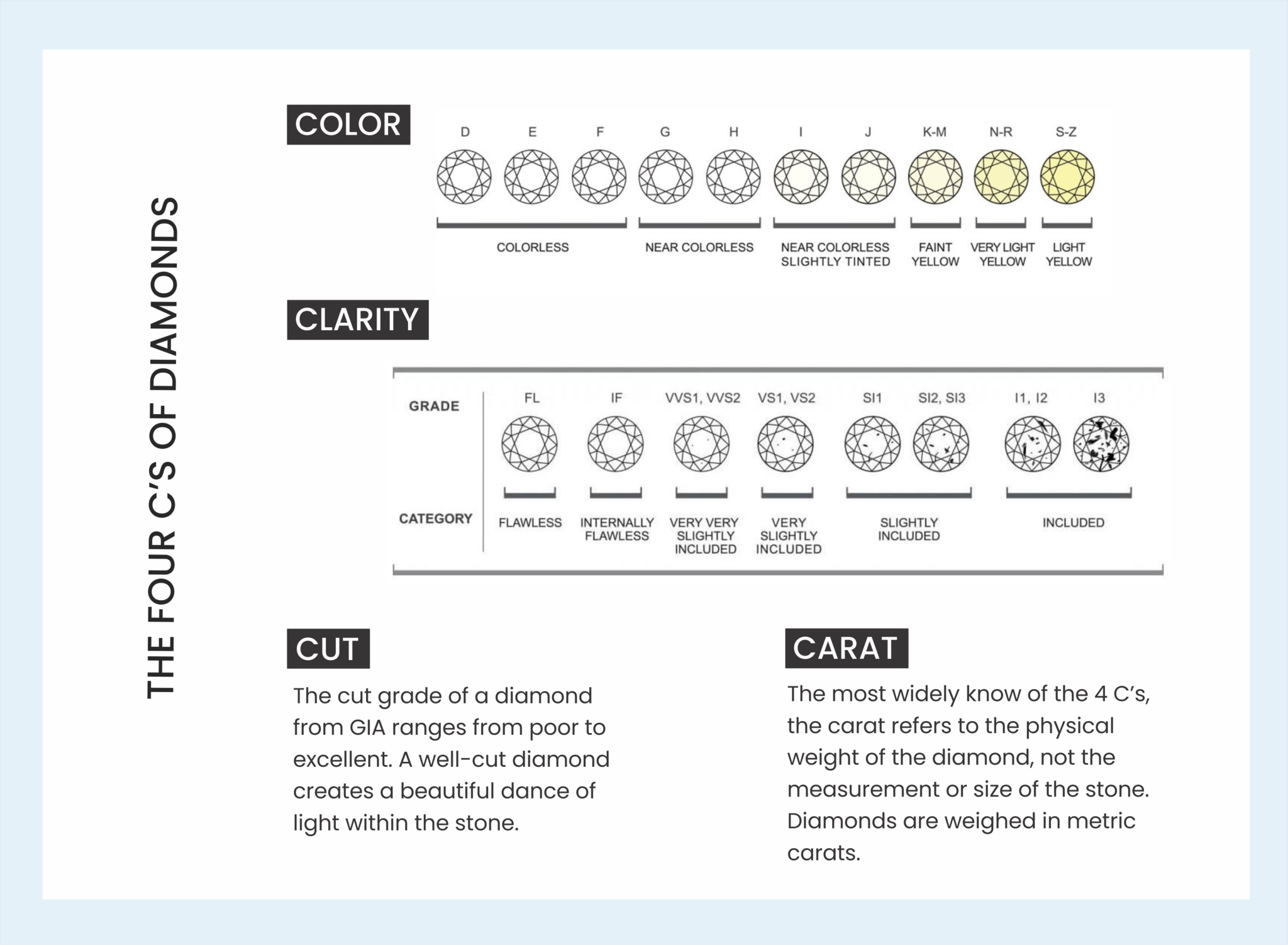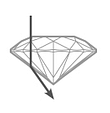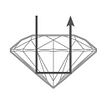The Four C's Explained
If you’ve looked at purchasing a diamond or an engagement ring, you’ve probably heard people talk about the four C's. It can seem overwhelming at first, but we’re here to explain exactly what the four C's are and why they matter when comparing diamonds!
The four C's diamond grading system has been used industry wide since 1931 and was started by the Gemological Institute of American - also known as GIA. In an effort to protect diamond buyers, the grading system of the 4 C's was born. These methods are the universal benchmarks by which all diamonds are graded and their value is determined. While there are many factors that go into determining the value of a diamond, these are the most commonly referred to.
We've had the privilege of helping thousands of couples over the years with their diamond purchases and our advice has always to go with the diamond you love, regardless of it's grading. If you fall in love with a stone, get what you love! While a diamond's grading characteristics are important, it doesn't override your preference or the budget you'd like to work with!
Meet the 4 C's - Color, Clarity, Cut and Carat

Color
The color of the diamond measures the hue (or lack of hue). Excluding fancy- colored diamonds, the most valuable diamonds have the least color (or yellow hue) and appear really white. Color is represented by a letter that falls between D and Z. The more colorless a diamond is, the greater the value.
The color scale is broken up into the following grades: colorless (D-E-F), near colorless (G-H-I-J), faint yellow (K-M), very light yellow (N-R), light yellow (S-Z) and fancy colored diamonds, which we'll touch a bit more on in a future post!
Clarity
Clarity measures the inclusions (like birthmarks) in a diamond. These inclusions appear naturally when the diamond is forming and can appear in any place in the diamond and in different colors like white or black. The less inclusions a diamond has, the more rare or valuable the diamond is. The clarity scale is broken up into the following grades: FL (flawless), IF (internally flawless), VVS (very very slightly included), VS (very slightly included), SI (slightly include), and I (included). Starting with VVS and going to the I category, each grouping has a 1 or a 2 ratings, which essentially is determined by the ability or difficultly to see the inclusion(s). Clarity is graded with a jewelers loupe, which is 10x magnification.
It’s important to remember that the differences between many of these grades can be extremely hard to detect with the naked eye! Any stone graded an SI1 or higher on the GIA Clarity scale will have inclusions that are completely invisible to the human eye and can only be found under magnification. Having a good understanding of the four Cs will help you feel confident purchasing a diamond and bring peace of mind knowing you’re getting a beautiful stone. There is no “right answer” as to what your diamond should be. Pick a stone that you love the look of and you can’t go wrong!
Cut
A well cut diamond can make light dance inside a diamond in a truly stunning way! GIA will grade cut on a scale from poor to excellent. A common misconception is that cut refers to the shape of a diamond, when it actually refers to the proportions of the stone, as well as the size and position of the facets inside. This combination greatly affects how the stone captures and reflects light. A very good or excellent cut diamond will amazing sparkle while others may seem to fall flat if the fall in the lower grading scale.
If a diamond is cut too shallow, it will lose light through the bottom of the stone

If a diamond is cut too deep, it will lose light from the pavilion of the stone

If a diamond is cut within ideal proportions, light will enter through the top and reflect back through the top of the stone

The cut of a diamond will fall within one of five categories: poor, fair, good, very good, and excellent. Most of the diamonds we sell will fall into the very good and excellent category, giving the diamond a great sparkle!
Carat Weight
Carat weight is a measure of how much the diamond physically weighs on a scale. Larger diamonds are more rare, so the price exponentially increases the larger the carat weight.
You may also hear people refer to the size of a diamond in points. One carat equals 100 points, so a 50-point diamond would weigh .50 carats.
While carat weight and millimeter size typically go hand in hand, there are diamonds that may measure smaller or larger than they weigh. For example, a 1ct round diamond should measure 6.5mm but you may have a 1 carat diamond that measures 6mm or 7mm.

____________________________________________________

